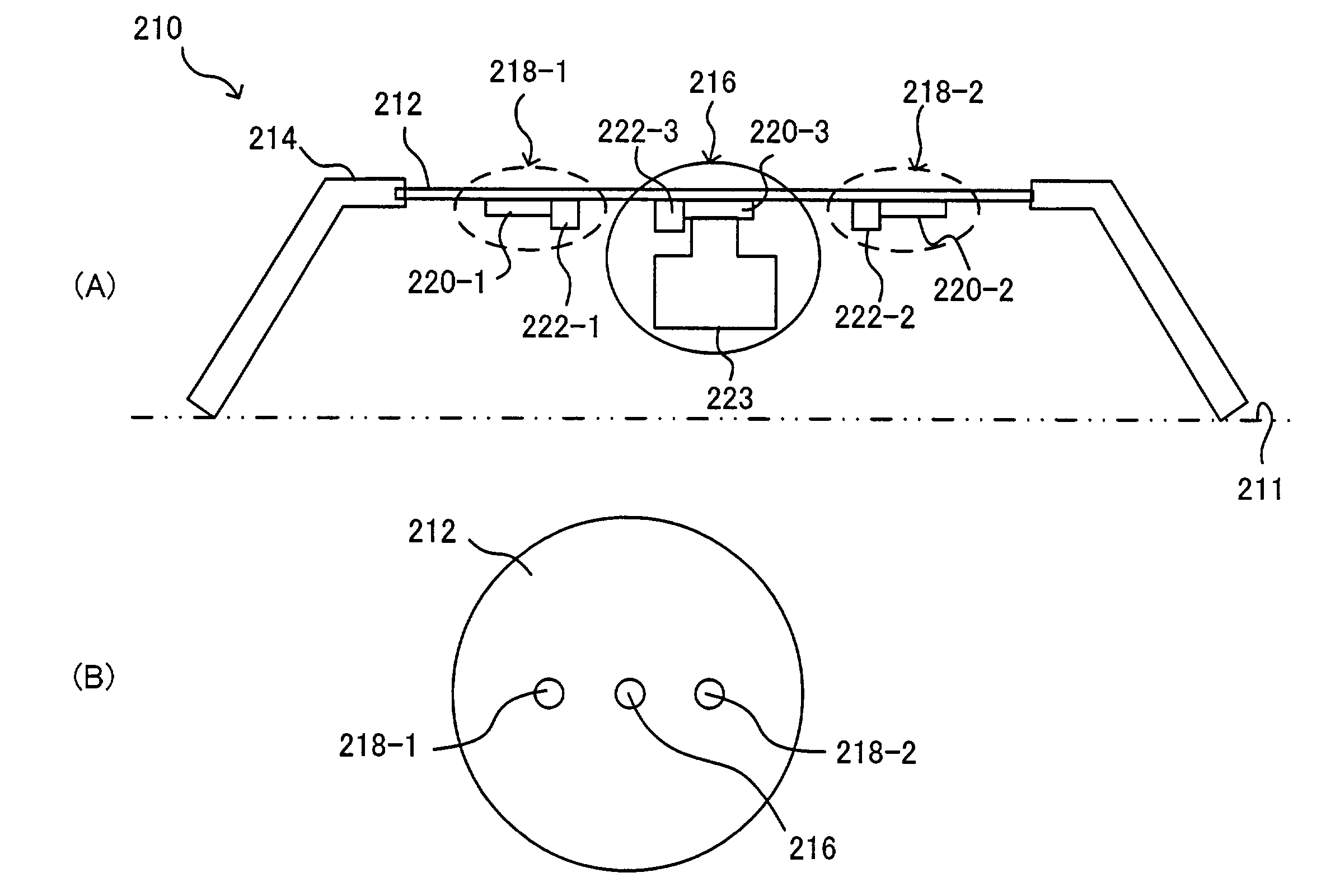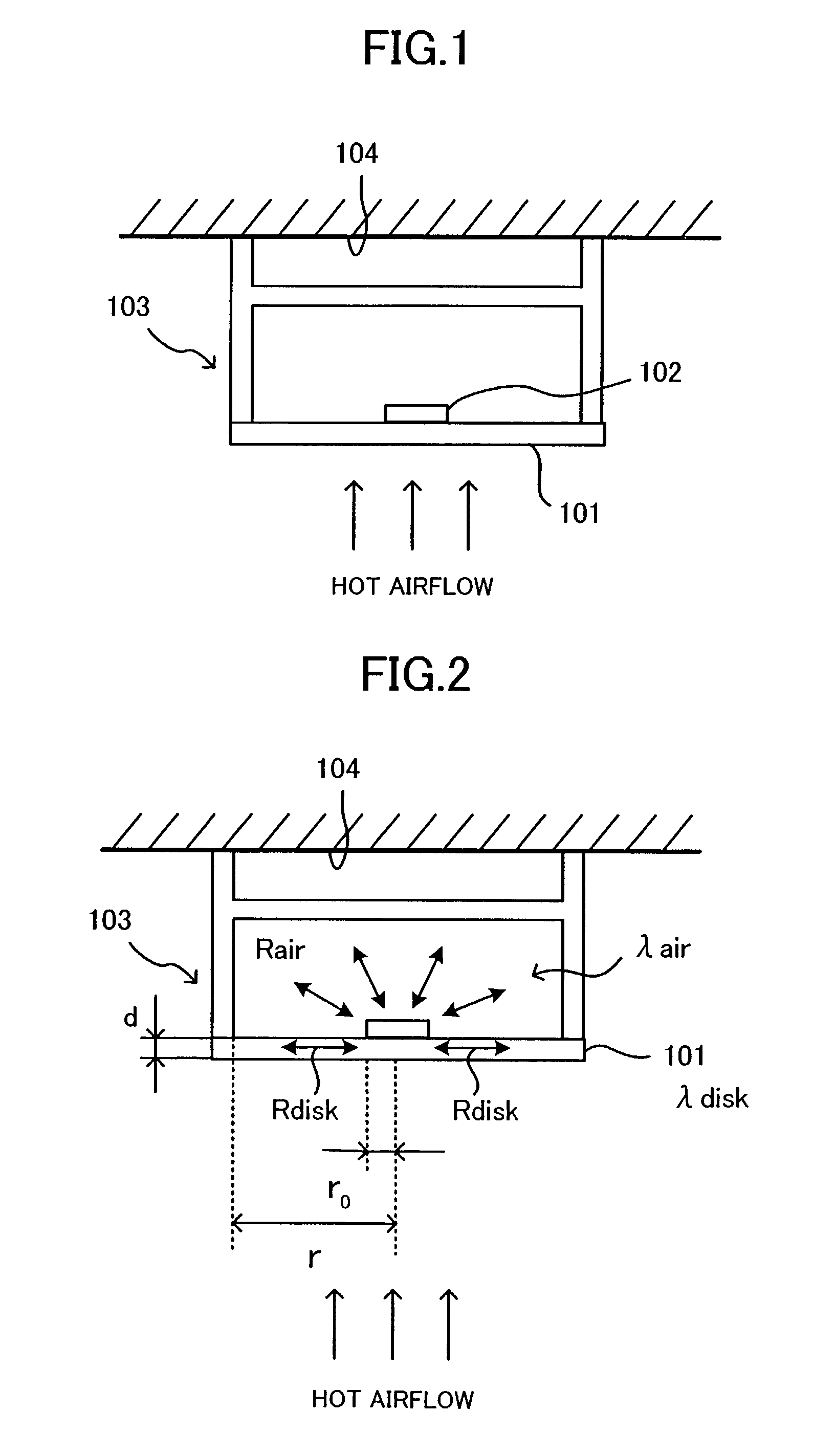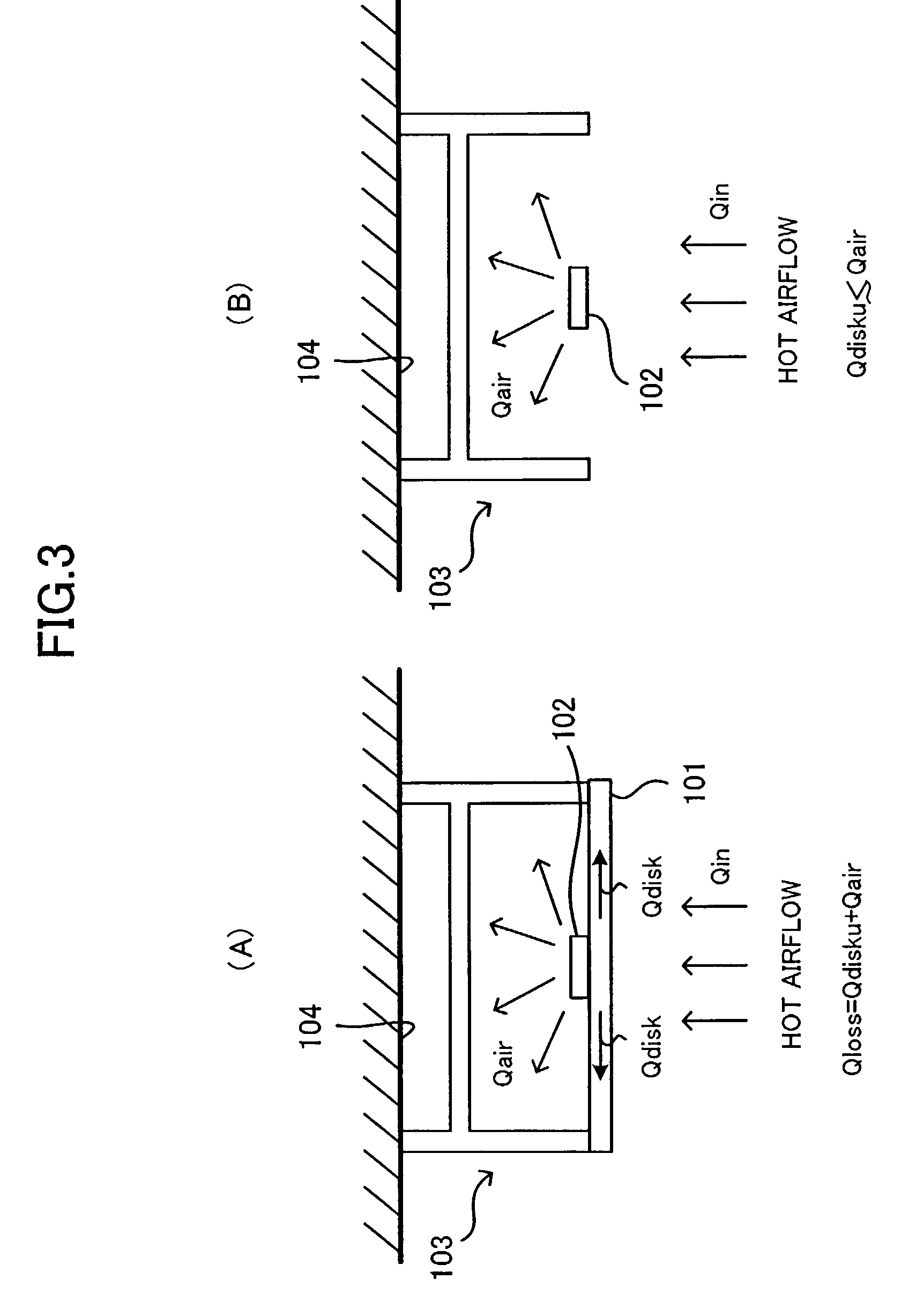Fire sensor
a technology of fire sensor and sensor body, which is applied in the field of fire sensors, can solve the problems of differential fire heat sensor and difficult to achieve a reduction in sensor size, and achieve the effect of enhancing detection sensitivity to a hot airflow
- Summary
- Abstract
- Description
- Claims
- Application Information
AI Technical Summary
Benefits of technology
Problems solved by technology
Method used
Image
Examples
first embodiment
[0130]Referring to FIG. 1, there is depicted a fire sensor constructed in accordance with the present invention. The fire sensor includes a baseplate 101, a temperature detecting element 102, and a sensor main body 103 which serves as a protective case. The outside of the baseplate 101 serves as a heat sensing surface. The temperature detecting element 102 is installed on the central portion of the inside of the baseplate 101 so that it does not contact the sensor main body 103. That is, the temperature detecting element 102 thermally contacts with the inside of the baseplate 101 to detect the temperature of the baseplate 101.
[0131]The sensor main body 103 contacts the radially end portion of the inside surface of the baseplate 101 and forms a closed space between itself and the baseplate 101. The temperature detecting element 102 is confined within the closed space.
[0132]The baseplate 101, temperature detecting element 102, and sensor main body 103 meet the following conditions. In...
eleventh embodiment
[0186]If the two high-temperature detecting portions 218-1, 218-2 are arranged at positions of axial symmetry with respect to the low-temperature detecting portion 216, as in FIG. 17, differential heat sensing can be performed without being influenced by the direction of a hot airflow generated by a fire.
[0187]Referring to FIG. 18, a heat conduction path in the fire heat sensor 210 of the eleventh embodiment shown in FIG. 17 is represented by an electrical equivalent circuit. The heat collectors 220-1 to 220-3, the heat accumulator 223, and the fixing member 212 are connected with one another through thermal resistors R. The heat collector 223 can be considered a thermal capacitor C. The thermal resistor lower R (lower heat resistance) between the heat accumulator 223 and the heat collector 220-3 is small and the remaining thermal resistors higher R (higher heat resistance) are large. With this construction, the first heat collector 220-1 and the second heat collector 220-2 are arra...
second embodiment
[0244]Referring to FIG. 35, there is depicted a fire heat sensor constructed in accordance with a twenty-second embodiment of the present invention. This embodiment is characterized in that it includes a single high-temperature detecting portion and two low-temperature detecting portions.
[0245]In FIG. 35A, a high-temperature detecting portion 218 is disposed at the center of a fixing member 212, and low-temperature detecting portions 216-1, 216-2 are disposed at positions of axial symmetry across the high-temperature detecting portion 218. Each detecting portion on the fixing member 212 is disposed as shown in FIG. 32, for example. The low-temperature detecting portions 216-1, 216-2 are connected to heat accumulators 223-1, 223-2.
[0246]A heat sensing circuit in this case which performs differential heat sensing is shown in FIG. 35B. That is, a first temperature-difference detecting portion 224-1 detects a first temperature difference ΔT1 between the temperature Th detected by the hi...
PUM
| Property | Measurement | Unit |
|---|---|---|
| thickness | aaaaa | aaaaa |
| thickness | aaaaa | aaaaa |
| thickness | aaaaa | aaaaa |
Abstract
Description
Claims
Application Information
 Login to View More
Login to View More - R&D
- Intellectual Property
- Life Sciences
- Materials
- Tech Scout
- Unparalleled Data Quality
- Higher Quality Content
- 60% Fewer Hallucinations
Browse by: Latest US Patents, China's latest patents, Technical Efficacy Thesaurus, Application Domain, Technology Topic, Popular Technical Reports.
© 2025 PatSnap. All rights reserved.Legal|Privacy policy|Modern Slavery Act Transparency Statement|Sitemap|About US| Contact US: help@patsnap.com



